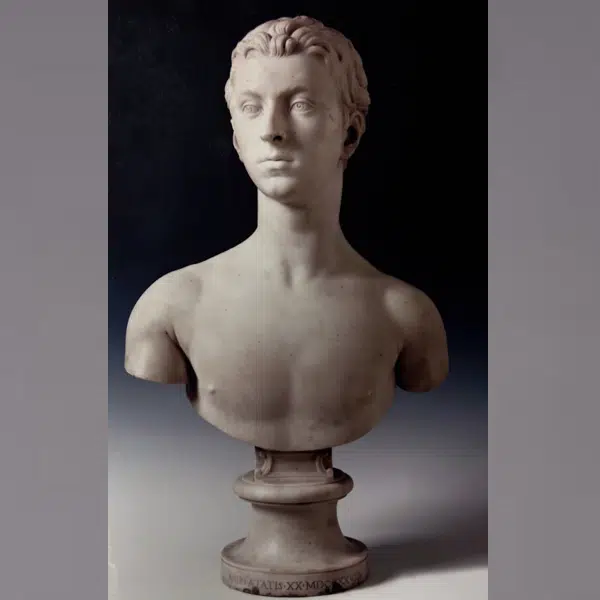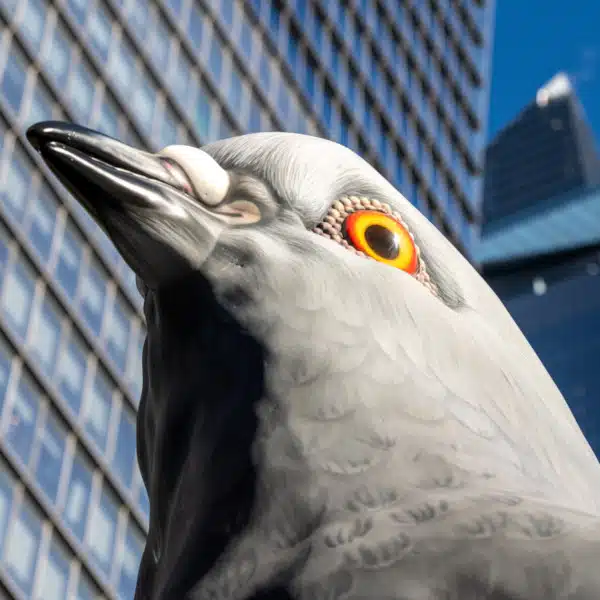
“Twentieth Century Dictionary”
For years, we've been captivated by the inventive creations of interdisciplinary artist Guy Laramée. Boasting a diverse background, Laramée is well-versed in all kinds of art forms, from painting to performance art. If you leaf through his work, however, you will find that his ongoing series of Bookwork appears to be his most passion-filled project.
Using innovative sandblasting techniques, Laramée transforms the pages of outdated encyclopedias and obsolete dictionaries into sprawling landscapes. He then paints, inks, and colors the carved books, culminating in topographies that are both rooted in realism and straight out of a dream.
Laramée embarked on his book art journey nearly 20 years ago. Inspired by a long-held belief in the “erosion of culture,” this project is deeply personal to the artist—and, he believes, inherently relatable to all humans. “I had the profound intuition that as a species, we had not evolved that much,” he says. “Now I see that our belief in progress stems from our fascination with the content of consciousness. Despite appearances, our current obsession for changing the forms in which we access culture is but a manifestation of this fascination. My work, in 3D as well as in painting, originates from the very idea that ultimate knowledge could very well be an erosion instead of an accumulation.”
We recently caught up with to Laramée to dive deeper into his art and find out more about this idea of “erosion.” Read our exclusive interview below to learn about how this concept has shaped his practice and how his art has evolved over the years.

“Twentieth Century Dictionary” (back)
Your artistic background spans myriad disciplines, from musical instrument design to theatre writing and directing. How have your eclectic experiences influenced these Bookworks?
Most of my switching of disciplines were actually ruptures. Like paradigm shifts. But I have to say that my knack for stage lighting is still present in my bookwork, especially in the last “Theatre” pieces (Historia das Americas II, Boa Esperança, and Summer Mountains).
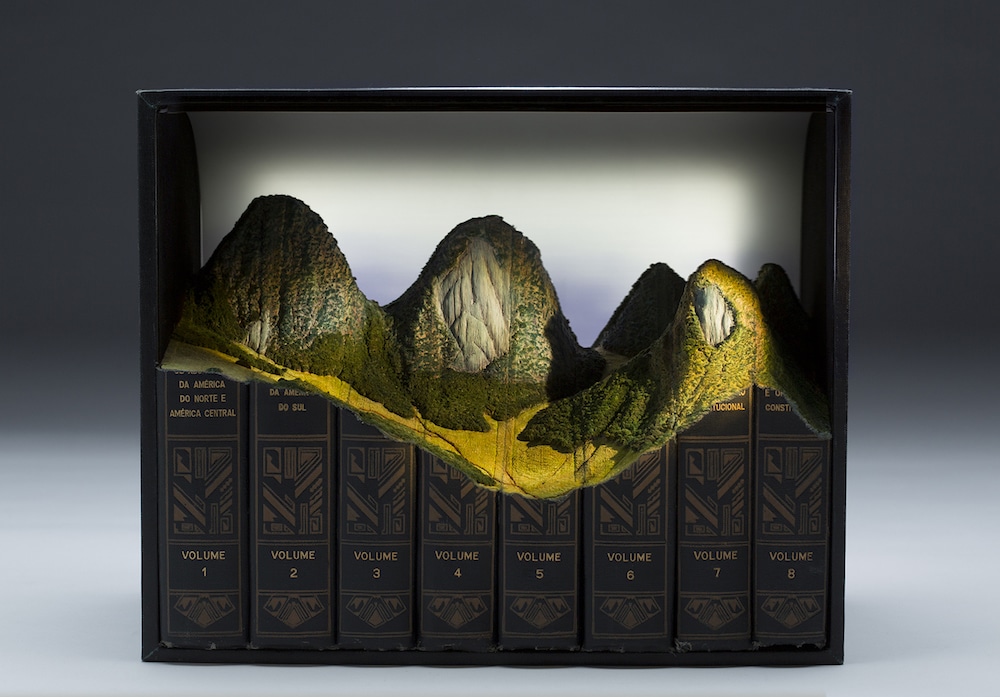
“Historia das Americas II”
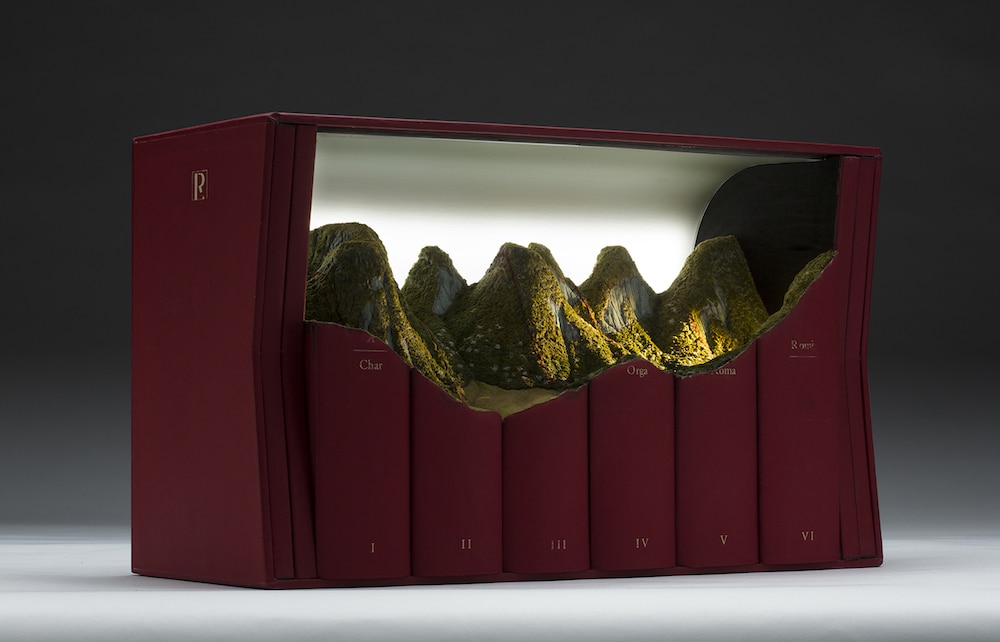
“Boa Esperança”

“Summer Mountains”
What does the process of creating a Bookwork typically entail?
A lot of anguish, insomnia, doubting about everything, including why in hell am I still doing this after 18 years…
It is not a design process. It is a typical tortured-artist kind of thing. Then out of nowhere a flash comes and things ease up a bit. Then starting the work triggers a lot of questioning again, and then at some point everything flows.

“Whale”
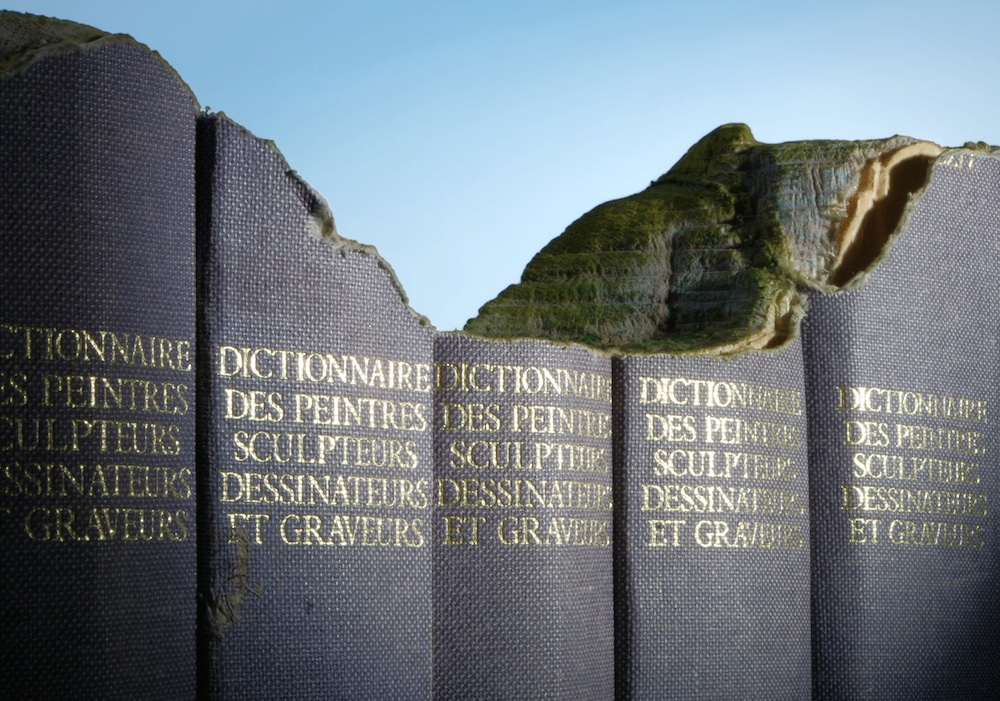
“Whale” (detail)
Your Bookwork revolves around the concept of cultural “erosion.” Can you please explain how this major theme came to be?
I think I’m not the only one who feels that there is too much information out there, that our heads are full of so much un-useful stuff. When I was 21, I suddenly had the insight that I was not my thoughts. That insight has followed me since.
If you walk into the alleys of any library, you will be amazed at the quantity of knowledge that humans like to pile up on shelves and in their mind. It is only when you realize that there is a world outside this mania that you can come to think that there is something crazy in this. Then maybe you can catch yourself wishing that we would all throw this into the garbage bin and start all anew. The tabula rasa of mythologies.
When it comes to the mind, we think of sophistication in terms of how many things we know. But there is another sophistication that is possible, one that in Asia has been fostered for centuries: keeping a distance in regard to the arborescent nature of the mind, not claiming any of the branches as yours.

“Sutra Rain on Sutra Land” (detail)

“Sutra Rain on Sutra Land” (back)
Have your views on the “erosion of culture” changed since you began this ongoing practice?
Yes, indeed. At first, this idea was a kind of sweet revenge. I wanted to express my disgust towards a civilization that is just piling up things—ideas and concepts being a special kind of “things,” but things still.
Now I see this “erosion of culture” from the point of view of impermanence. Of course nothing lasts, and “cultures” are not immune to that. But that’s not exactly what is meant by “impermanence.” What is it that we call a “thing” in the first place? What is it that we call a “culture”? Do these things ever exist in the first place? Why do we insist on putting labels on things, in naming clusters of phenomena as “things”? Why do we absolutely need to freeze the experience, to stop it? Do we see that it is us who constitute things as things? It is amazing, this compulsion, isn’t it?
This is more how I see the notion of “erosion” nowadays; as a possibility of opening up the dam where we imprisoned experience.

“Pilgrims”

“Pilgrims” (detail)
Many of these pieces turn books into topographical landscapes. Where do you find inspiration for these scenes?
It depends. Sometimes an existing physical place. I traveled a lot to Brazil these years and so it shows in many of the works.
But since ultimately it is not actual places that the work evokes, but feeling of these places, I get to “depict,” so to speak, some other feelings that life brings to my table. In fact, I’m not illustrating anything, I’m just allowing myself to enter into the process and once I’m in, things seem inevitable. Feelings get evoked, often in terms of physical metaphors—a cavern, a desert, etc. These are mindscapes more than landscapes.

“Historia das Americas II” (detail)
Do you have a favorite (or most meaningful) piece?
It is like asking to a Dad or a Mom: “Of all your kids, who is your favorite?”
Do you have any new pieces or upcoming projects?
I never know what’s next, hence the anguish and the torment. There is the pressure to express “something” but I don’t know what it is that wants to be expressed!
Lately I started to draw again, and so it seems that the work coming out of this will address this question, the frontier between order and chaos.
We artists live on the edge of a volcano, waiting for the hot lava to be spit out and solidify in works of art. But we never know when it is that the crater will explode and that the time will have come that we, too, be melted again into the crucible of life.
But in fact, isn’t it the case with all of us?
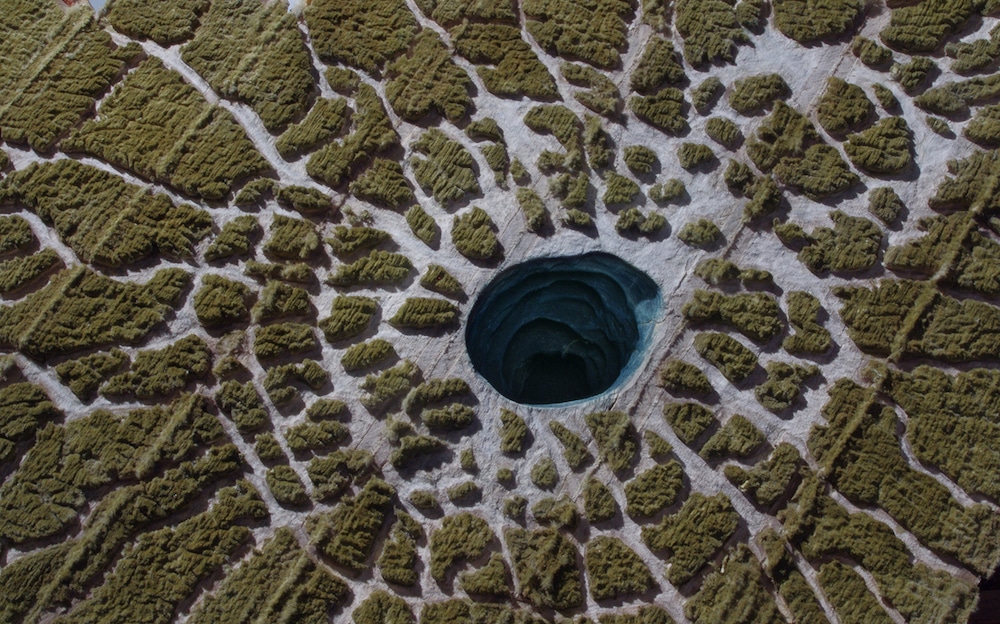
“L'Énigme (detail)”

“L'Énigme”

“L'Énigme” (back)
Browse through a selection of Guy Laramée's stunning book sculptures.

“Whale”

“Whale” (detail)

Srautasutra

“Srautasutra” (detail)

“Chapada”

“Chapada” (detail)

“Chapada” (back)

“Timepieces”

“Timepieces” (detail)

“Above”

“Above” (detail)

“Above” (detail)
Guy Laramée: Website
My Modern Met granted permission to use photos by Guy Laramée.
Related Articles:
Extraordinary Carved Out Book Landscapes
Extraordinary Carved Out Book Landscapes – Part 2
Mountain Landscape Carved Into Encyclopedia Britannica
Extraordinary New Book Carvings of Mountains and Caves
Secondhand Novels Are Carved into Extraordinary Mountainous Landscapes











































































